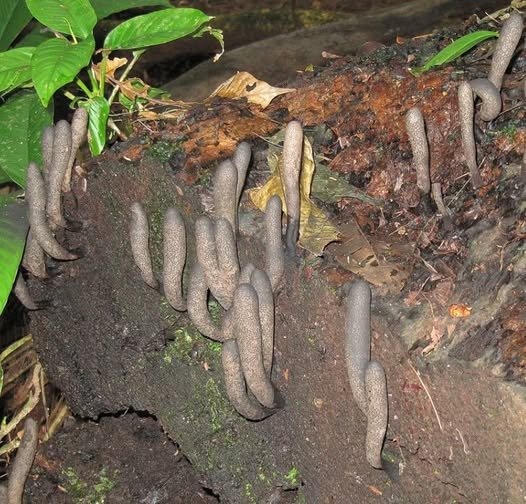Imagine walking through a quiet forest, surrounded by the sounds of nature and the scent of damp earth. As you stroll, you notice something unusual protruding from the ground – black, gnarled shapes that eerily resemble human fingers. This is Xylaria polymorpha, more commonly known as Dead Man’s Fingers, a fungus that has earned its nickname due to its unsettling appearance.
Dead Man’s Fingers are typically found near old hardwood stumps or buried roots, particularly oak, beech, and maple. They thrive in shaded, moist environments where decay is already present. The fungus grows in clusters, often resembling fingers emerging from the ground, with colors ranging from grayish-white to coal-black as they mature.
Despite their alarming appearance, Dead Man’s Fingers are harmless to people and animals. They belong to a group of organisms called saprophytes, which feed on decaying organic matter. By breaking down dead material, they recycle valuable nutrients back into the soil, enriching the earth and clearing space for new plants and trees to grow.
These fungi play a vital role in the ecosystem, serving as nature’s recyclers. Without them, forests would be overwhelmed with dead matter, and the cycle of life and death would be disrupted. Dead Man’s Fingers and other decomposers work tirelessly to break down organic waste, releasing nutrients that fuel future growth.
The paradox of Dead Man’s Fingers lies in their appearance and purpose. While they may look sinister, their function is deeply beneficial. They embody the cycle of life and death, reminding us that decay is not the end of the story but rather a part of a larger cycle that allows life to flourish again.
The next time you encounter Dead Man’s Fingers on a forest walk, remember that they are not a sign of danger but rather a symbol of nature’s recycling process. These strange black “fingers” are quietly returning the strength of the old to nourish the new, a testament to the intricate web of life in the forest.


